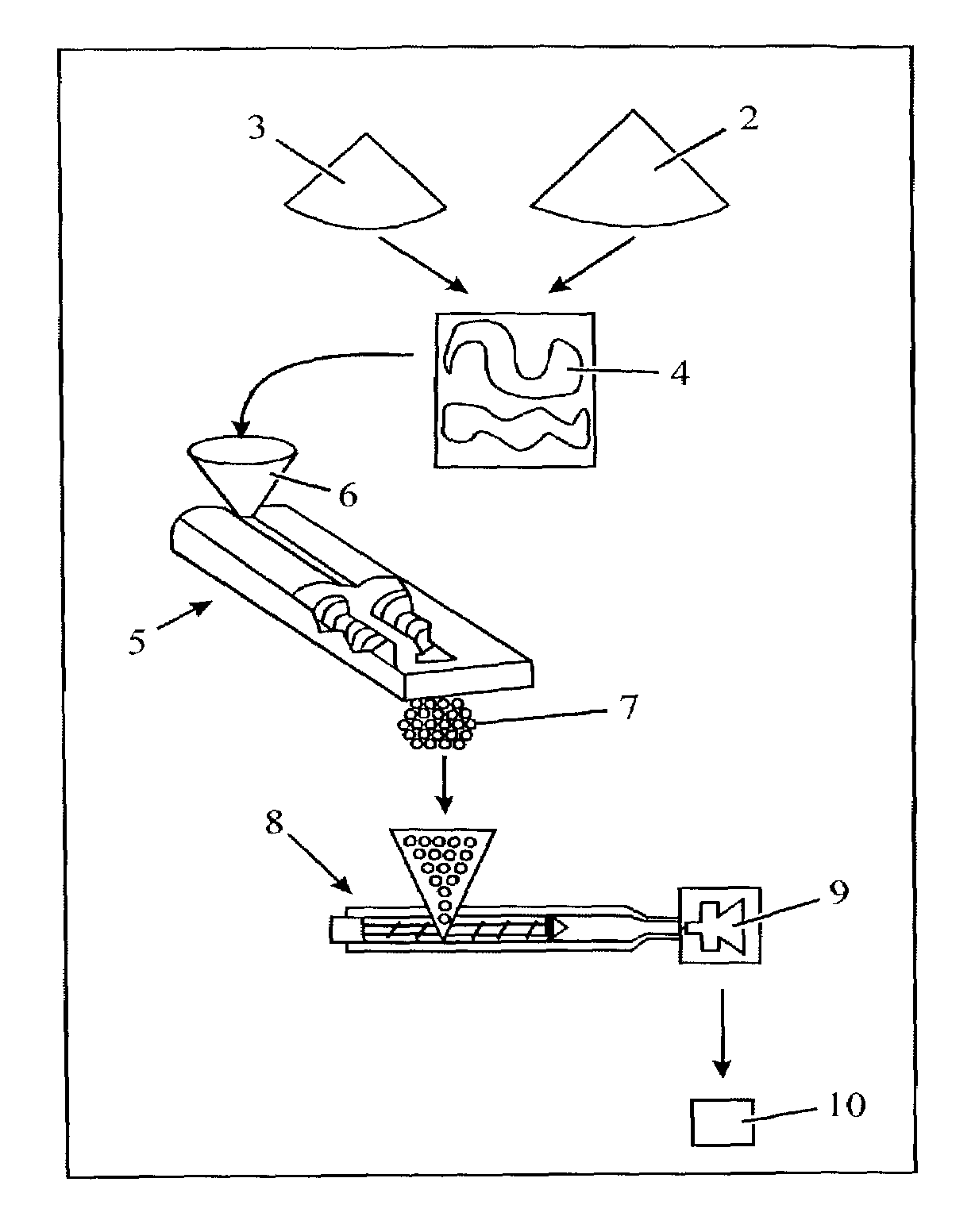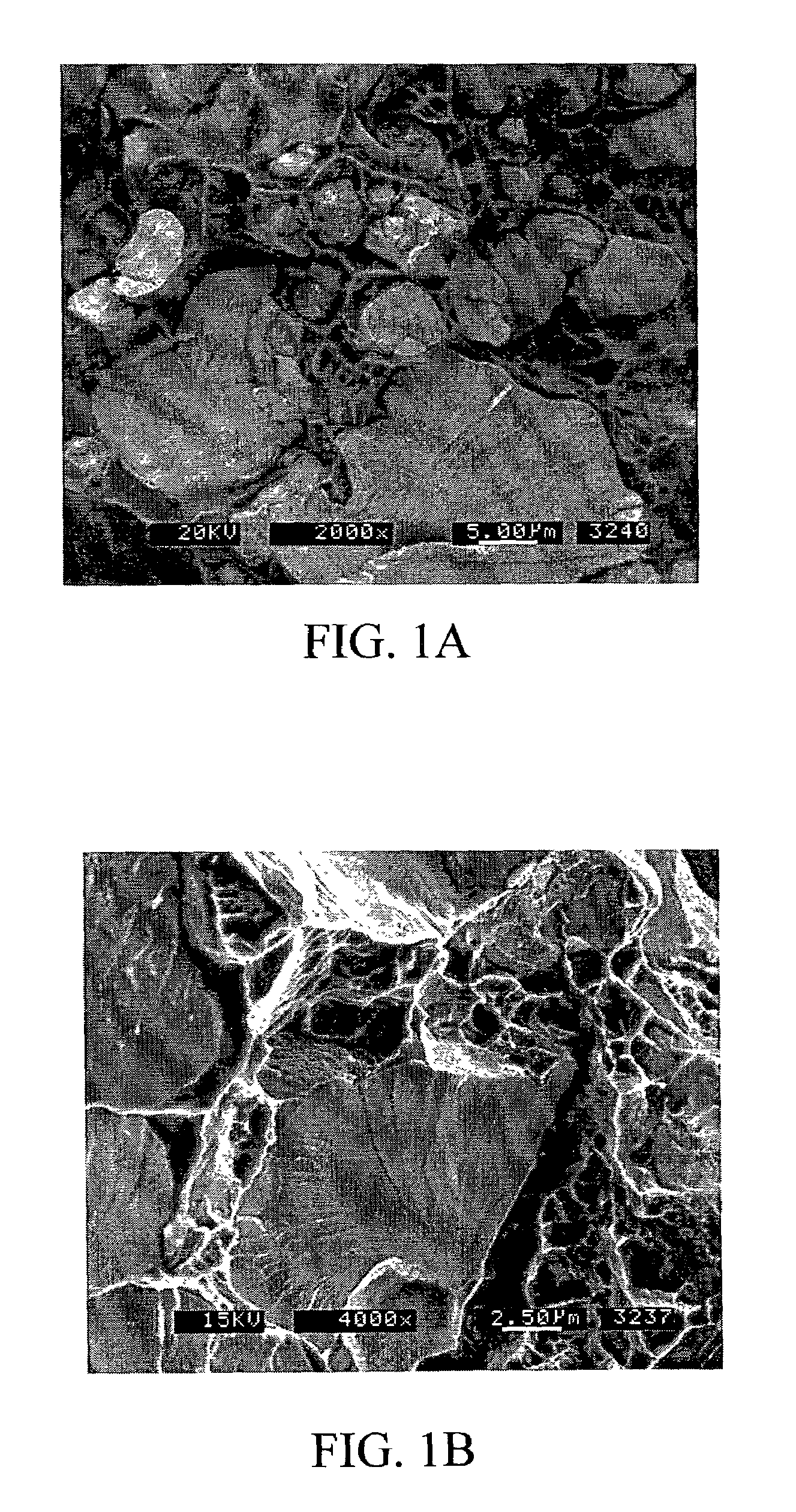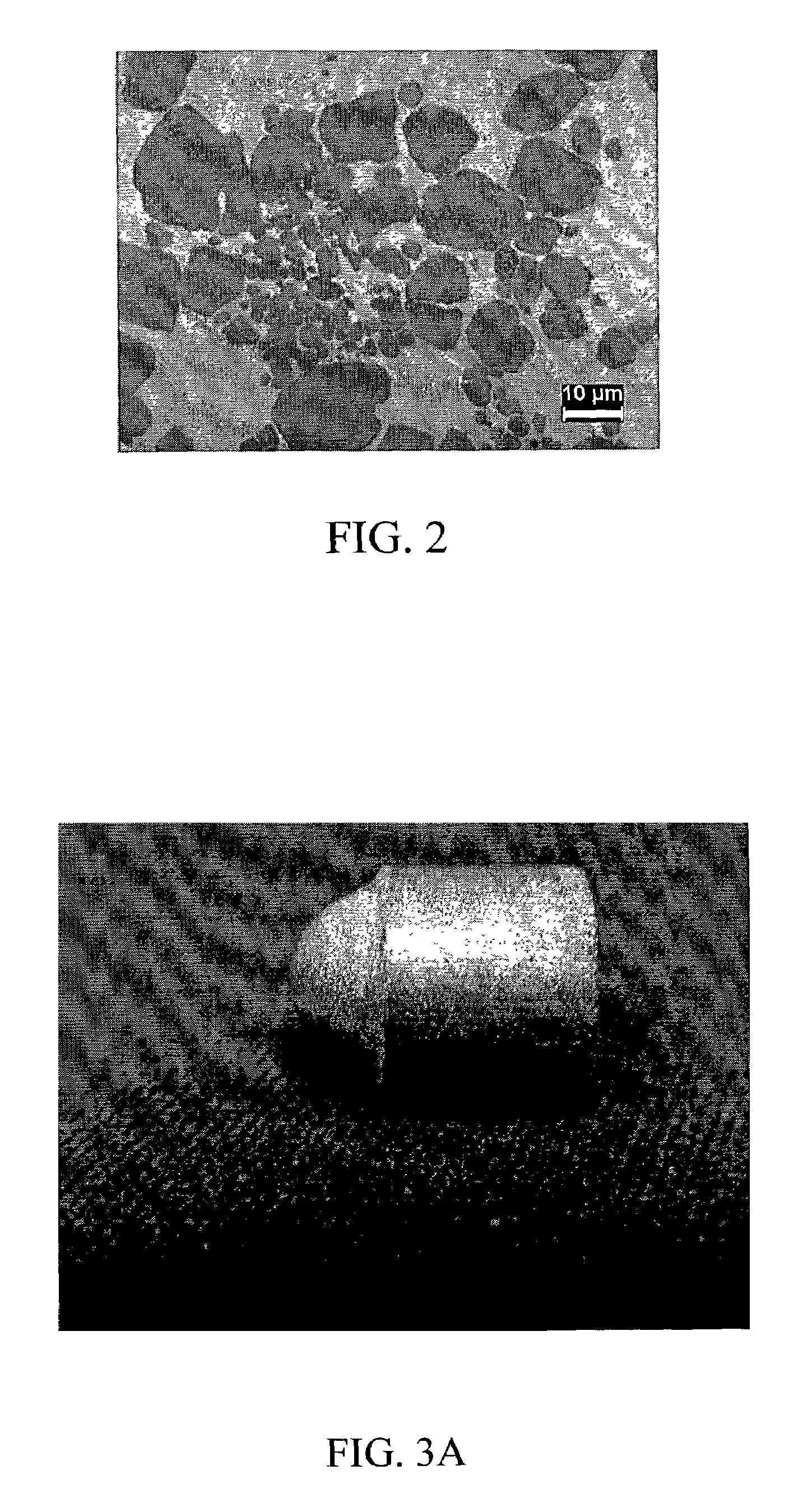Composite material containing tungsten and bronze
a technology which is applied in the field of composite materials, can solve the problems of patent disclosure of a composite made of tungsten and bronze, the toxic effect of lead becoming apparent, and the inability to completely satisfy the needs of lead replacement,
- Summary
- Abstract
- Description
- Claims
- Application Information
AI Technical Summary
Benefits of technology
Problems solved by technology
Method used
Image
Examples
example 1
[0062]A powdered bronze alloy with a 90:10 ratio of Cu:Sn was mixed with tungsten powder in a 1:1 blend by weight. The mixture was compacted in the shape of rectangular bars with 0.5% ethylene-bis-stearamide lubricant at 50 psi compaction pressure. The bars were sintered at 1100 C. to produce sintered bars consisting essentially of tungsten particles dispersed in a bronze matrix. The bars had a sintered density of 11.3 g / cc and a transverse rupture strength of 600 MPa. The resulting component had high impact toughness hitherto unseen in tin-tungsten composites.
[0063]The microstructure of the fracture surface showed ductile fracture with relatively high wettability of the tungsten grains (FIGS. 1A and 1B). Optical micrographs of the bulk of the composite confirmed the presence of wetted tungsten particles dispersed in a bronze matrix (FIG. 2).
example 2
[0064]A mixture comprising 60% by weight of tungsten powder and 40% by weight of bronze powder is mixed with a blend of waxes comprising 20% by weight paraffin wax, 40% by weight microcrystalline wax and 40% by weight Carnauba wax at 190° F. (about 88° C.) under 28 inches of vacuum for 30 minutes, such that the wax blend comprises 55 vol % of the metal / wax mixture. The metal / wax mixture is then brought back to atmospheric pressure and poured into a preheated rubber mould (about 82° C.). The filled mould is vibrated and returned to 26 inches of vacuum for one minute in a heated oven (about 82° C.), with vibration continuing for 5 minutes. The filled mould is then removed from the oven and allowed to cool until below about 27° C.
[0065]Debinding is then done at about 300° C. for 1 hour, then at 450° C. for 1 hour and finally at 550° C. for 1 hour under an atmosphere of hydrogen gas. Sintering is then done at a temperature of 850° C. for 1 hour under hydrogen gas.
[0066]Parts made using ...
example 3
[0067]To determine the effect of varying the relative chemical composition of the material, several different compositions were tested and the average density of the composite material was measured. The results are presented in Table 2. In Table 2 all samples containing 52% tungsten were prepared using the method and conditions described in Example 5, with all remaining results presented in Table 2 having been produced by the method and conditions described in Example 6.
[0068]
TABLE 2Material composition and average composite densityExperimentalDensitySeriesMaterial Composition(g / cm3)150W-50Cu10.850W-7.5Sn-42.5Cu10.58(6.4 g / cm3 tap density W)50W-7.5Sn-42.5Cu10.7(10 g / cm3 tap density W)55W-4.5Sn-40.5Cu10.350W-5Sn-45Cu10.645W-5.5Sn-49.5Cu10.6540W-6Sn-54Cu10.45254W-1Sn-45Bronze(90Cu10Sn)11.250W-5Sn-45Bronze(90Cu10Sn)10.650W-50Bronze(80Cu20Sn)10.982W-18Bronze(90Cu10Sn)9.372W-28Bronze(90Cu10Sn)10.362W-38Bronze(90Cu10Sn)11.052W-48Bronze(90Cu10Sn)11.2352W-47.5Bronze(90Cu10Sn) 0.5Fe10.652W-4...
PUM
| Property | Measurement | Unit |
|---|---|---|
| mean particle size | aaaaa | aaaaa |
| mean particle size | aaaaa | aaaaa |
| mean particle size | aaaaa | aaaaa |
Abstract
Description
Claims
Application Information
 Login to View More
Login to View More - R&D
- Intellectual Property
- Life Sciences
- Materials
- Tech Scout
- Unparalleled Data Quality
- Higher Quality Content
- 60% Fewer Hallucinations
Browse by: Latest US Patents, China's latest patents, Technical Efficacy Thesaurus, Application Domain, Technology Topic, Popular Technical Reports.
© 2025 PatSnap. All rights reserved.Legal|Privacy policy|Modern Slavery Act Transparency Statement|Sitemap|About US| Contact US: help@patsnap.com



